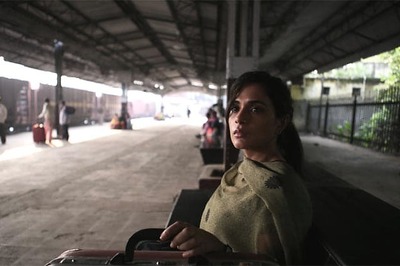
views
The nationwide protests against the Citizenship (Amendment) Act and National Register of Citizens reveal that Muslim youth, in particular, and others, in general, are trying to step out of traditional barriers to create socio-political space for them. The young are displaying their ideological dexterity and redefining their role to create a more mature democracy with unity, diversity and inclusivity.
The youth on the streets are not only protesting against an Act which they believe is divisive, discriminatory and unconstitutional, but they are also protesting against the measures that encroach upon the fundamentals and the spirit of the Constitution.
During protests in various parts of the country, it is important to note that Muslim religious leaders have not been seen at the forefront. It’s likely that they have been deliberately kept at a distance to ensure that the demonstrations, right now largely seen as inclusive, are not given a religious angle. Muslim clerics who have in one way or another supported the CAA are being isolated and their calls rejected in Delhi and elsewhere.
Irtiza Qureshi, founder of an Old Delhi-based organisation called Muslim Association Rehabilitating Homeless and Mistreated, or MARHAM, said, “For several decades there have been voices by the youth expecting the religious leaders to initiate programmes to unite the Muslims on a national level who had been divided into sects, giving easy opportunity to communal political parties to exploit them.”
“After the Jamia and AMU incidents, that miracle that we also dreamt of finally happened. Ever since these protests started, we have forgotten the terms Shias, Sunnis, Deobandi, Hanafi, Ahle Hadees or Barelvis. The heroes of this beautiful harmony are the students and we want to see them as leaders. The religious leaders had the opportunity to become heroes, but they lost that opportunity. Now we have an alternate leadership and a very effective one. We have kept the religious clerics aside,” Qureshi said.
According to Dr Maskoor Ahmed Usmani, president, Aligarh Muslim University Students’ Union (2017-18), traditional religious leaders are as active as an ordinary citizen but they are not leading the movement because this is not a religious movement.
“It is a movement by the youth of all religious affiliations. However, traditional religious leaders are also fighting against this black law as they are citizens of India and they know that it is against the secular fabric of the Constitution,” he said.
“The youth are more concerned about their livelihood that can be further threatened by expenses on CAA and NRC more than any alleged “Islam in danger” calls today. This movement is about saving the very secular spirit of our constitution and people are following the constitution written by Babasaheb (Ambedkar) and not any traditional religious leaders. They are on the road because the Constitution is in danger.”
Usmani said the Muslim youth are redefining their socio-political boundaries as can be seen by women leading this movement, be it at Jamia Millia Islamia or Shaheen Bagh or anywhere else in India.
“The Muslim women are wrongly perceived to be kept hidden in the house under a veil. But now these very women are on the streets to safeguard the Constitution, their rights and the secular nature of the Indian polity,” he said.
“Muslim youth are moving beyond religious identities and are trying to preserve the idea of unity in diversity. Muslim youth are asserting their social identity and questioning the government on real issues like unemployment, declining GDP, farmers’ suicide, etc.”
Keeping religious leaders away from the protest is a wise decision, said Shaheen Bagh resident Sajid Nomani, who works with a leading multinational corporation. “If religious leaders are involved, the protest would not have a uniting impact. This will further defeat the purpose of the protest. Once the protest takes on a religious motive, things would go haywire,” he said. “In the best interests of the country and the great purpose for which all Indians have come under the same umbrella, keeping the religious leaders at bay is something which is recommended.”
The fight is not between India and Muslims, but between India and laws that aim to destroy its democracy, said Maryam Siddiqui, a student of Jamia Millia Islamia.
“Neither does any group need to make this its own personal fight and send only religious leaders to the front, nor should anyone have to prove their patriotism to any random questioner. Everyone is free to participate as this is the fight of one India to save democracy and the Constitution,” she said.
“There have been many instances where minorities have been specifically targeted, hate crimes in the form of lynching have been on the rise in the country, and modification in certain rules and laws have created hardship for minorities such as Muslims. So much so that they seem to be targeted at them. The awakening of Muslim youth and the youth of India, in general, is a change that the country needed. It is not only the Muslims but a large part of the youth in general that has woken up and decided to be aware and active.”
(The author is a freelance journalist. Views expressed are personal.)


















Comments
0 comment